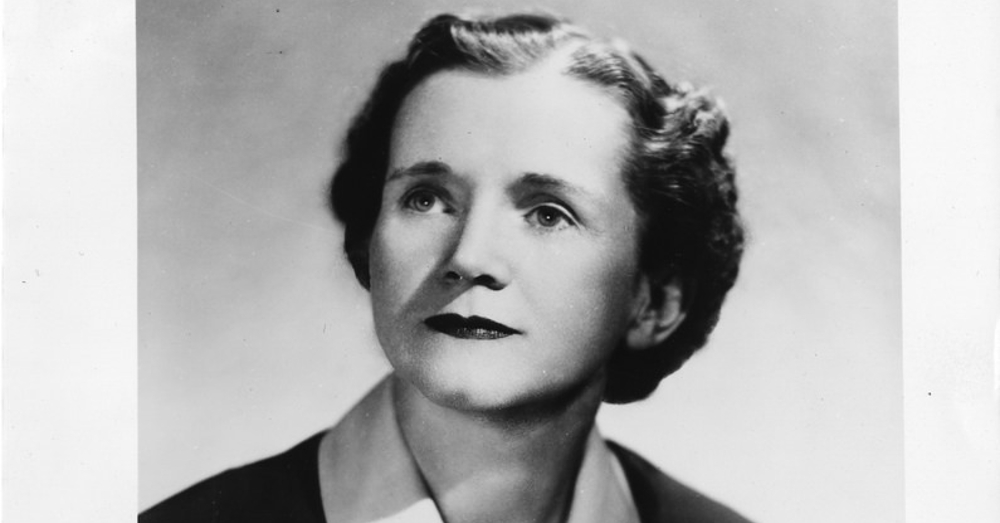
The Story of Rachel Carson: How One Woman’s Love for Nature Changed the Way Humans View the Environment
One of the most celebrated American writers of her time, Rachel Carson, achieved the impossible: convincing a society intent on mastering and controlling nature that we, as humans, must view ourselves as being part of nature rather than separate from it.
March 4, 2017 | Source: Mercola.com | by Dr. Joseph Mercola
One of the most celebrated American writers of her time, Rachel Carson, achieved the impossible: convincing a society intent on mastering and controlling nature that we, as humans, must view ourselves as being part of nature rather than separate from it.
An impassioned writer turned biologist turned environmental activist, Carson understood from a young age her place in nature. Her mother, Marie Carson, was a former schoolteacher, who like many women during the early 1900s gave up her career for marriage and motherhood.
Her husband Robert, Rachel’s father, brought little money into the household, never providing more than a meager existence for the Carson family, who for decades lived without central heat or running water, according to the featured PBS documentary “American Experience — Rachel Carson.”
Though a poverty-stricken housewife, Marie was an educated woman who enjoyed reading and music and possessed an insatiable love for nature.
Fortunately for mankind, that love and respect for nature was passed down to Rachel, who today is accredited for the existence of environmental protections, and the simple willingness to weigh the impacts of technology on nature.
Inspired by a popular movement centered on the belief that children should study nature and not books, Marie transformed the great outdoors into Rachel’s classroom. Together, the two spent entire afternoons outdoors identifying birds and insects while listening to and appreciating the sounds of nature.
Carson was a solitary, yet thoughtful, young girl who greeted the birds on her way to school.
Her talent for writing was apparent early on as she wrote her own stories by the ripe age of 8, and by 10 had become a published author after winning a contest sponsored by the popular children’s magazine, St. Nicholas. At 14, Carson was selling her work to magazines.
A Creative Writer Who Fell in Love With Science
Marie did everything in her power to ensure Rachel received the education she longed for, but never received. With the sale of her mother’s china and the help of a scholarship, Carson attended the Pennsylvania College for Women.
To the shock of her friends and family, she decided to switch her major from English to Biology, eventually earning her master’s degree at Johns Hopkins University in Baltimore, Maryland.
Carson landed a research position at a marine laboratory in Massachusetts where she discovered the ocean and her unshakable love for the vast, unexplored body of water. It was then Carson realized that everything was interconnected, and man was not in control.
Her journey into environmental activism began during World War II, a tense and fearful time in which Americans were suffering the brunt of a brutal war and infectious disease outbreaks that caused unbearable symptoms and killed millions.
While America focused on winning the war — using science to build powerful weapons and chemicals to combat disease-spreading insects — Carson accepted a position as a conservation writer with the U.S. Bureau of Fisheries, which would later become the U.S. Fish and Wildlife Service (FWS).
She realized her stories would make excellent feature pieces, and began selling them to newspapers including the Baltimore Sun. Weary about losing credibility simply because she was a woman, Carson omitted her first name from her articles.
While she excelled in her job, she didn’t feel satisfied and, for a while, contemplated giving up on writing. These feelings receded though, once she learned how to marry biology with writing.
Drawing Attention to the Great Blue Sea While the World Was Engulfed in War
Carson’s first book, “Under the Sea-Wind,” was a beautiful masterpiece that celebrated the beauty of birds and sea creatures in their natural habitat. It painted a vivid, yet mysterious picture of a never-before-seen world.
Though it received early praise, the book never hit stores and ultimately flopped as its release coincided with the bombing of Pearl Harbor.
As formidable as the war itself was the massive outbreaks of typhoid fever faced by soldiers abroad and Americans at home. Crowded and unsanitary living conditions proved to be the perfect breeding ground for body lice, which carried and spread the disease.
Typhus is a horrible condition that begins with a terrible headache and back pain, which leads to vomiting, diarrhea, abdominal rashes and eventually deafness and the loss of limbs.1
But the discovery of dichlorodiphenyltrichloroethane (DDT) as a powerful insecticide offered hope in combating the insufferable disease, while giving man a sense of control over his environment.
Acutely toxic to insects, but seemingly harmless to humans, DDT was sprayed indiscriminately abroad and at home to kill mosquitos carrying malaria, body lice and eventually agriculture pests. As shown in the film, millions of people were dusted with DDT. It was sprayed in their hair, inside their clothing and even on sleeping babies.
At the time, DDT seemed like a miracle, a gift from God even. DDT and the hydrogen bomb were accredited for winning the Pacific War. Swiss scientist Paul Müller won the Nobel Peace Prize for discovering DDT.
More than 4.5 million homes and 20 million acres of farmland in the southern U.S. were treated with DDT, according to the film. In 1944, Time Magazine named DDT one of the world’s greatest discoveries, but Carson knew better.
